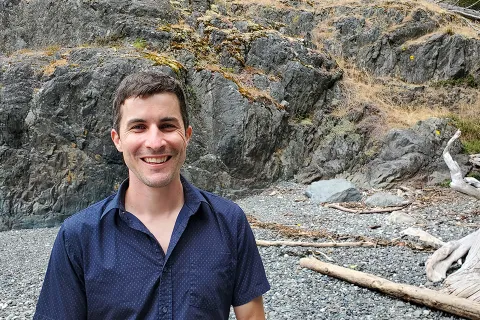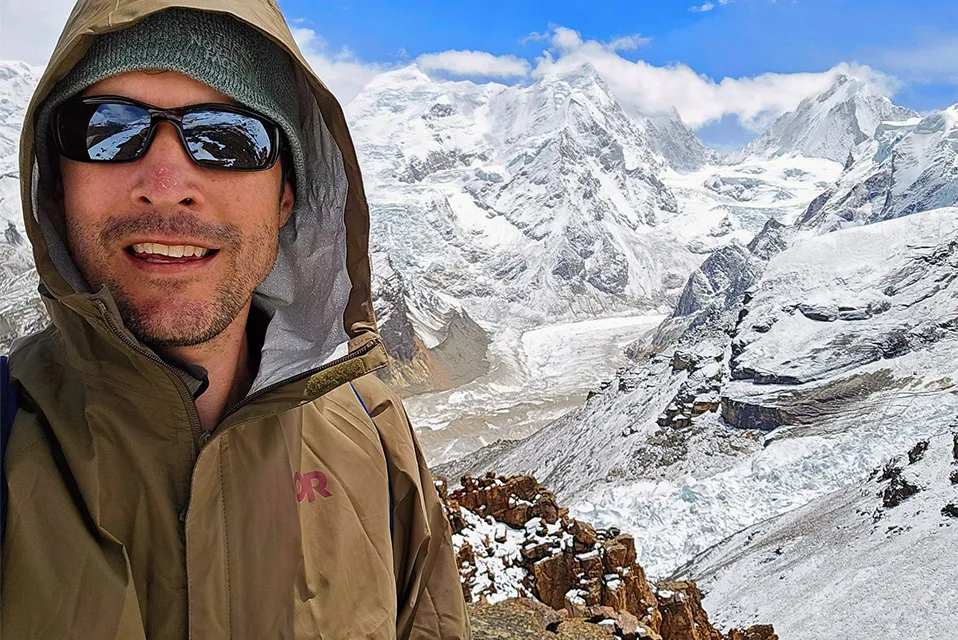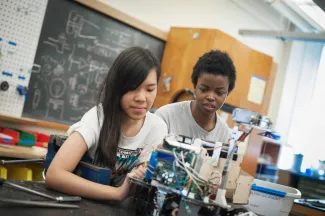It is never too late to learn a new skillset. Engineering and science are lifelong pursuits for the curious, where every challenge is an opportunity to grow within a constantly evolving field.

- Degree: Bachelor of Applied Science
- Grad year: 2025
- Program:
- Campus: Vancouver
I graduated from high school in Canada in 2003 at age sixteen, long before my journey at UBC. The following year, I enrolled at Western University but ultimately withdrew, recognizing I wasn’t yet ready for academic life. I spent several years working various jobs until I discovered a career that challenged and motivated me: tree planting in Northern Canada. What began as a summer job became a decade-long forestry career, during which I planted over three million trees across multiple provinces.
In the winters, I travelled extensively and eventually settled in Peru, where I worked in tourism for four years. During this time, I learned Spanish and developed a strong connection with the local culture. A back injury in 2018 forced me to reconsider my physically demanding lifestyle and inspired a shift toward intellectual and creative problem-solving—leading me to UBC Engineering.
Entering UBC as a mature student didn’t limit the opportunities I could pursue. From building an AI-powered unicycle robot, to contributing to a new particle detector for CERN, to publishing a machine learning paper—the UBC community has supported me every step of the way.
Completing a degree in Engineering Physics has been one of the most rewarding experiences of my life.

Who or what has made your time at UBC memorable?
A degree at UBC offers access to world-class researchers—but building relationships takes initiative.
In third year, I began attending seminars at the Institute of Applied Mathematics, led by Prof. Michael P. Friedlander, a leading researcher in optimization. After attending a workshop he organized, I enrolled in his CPSC 406 course. His mentorship helped me see linear algebra and optimization in new ways and pushed me to pursue graduate-level skills, including research writing and mathematical proof. I later took his graduate course in convex analysis, which culminated in a research project on robotics and control.
In fourth year I had a chance encounter with Prof. Eldad Haber, a leader in computational science, as he was walking to get coffee. I had ideas for a summer research internship, so I gave him my best elevator pitch. That initial conversation eventually led to my first publication as well as a first-author collaboration with KAUST on a second paper "Synthetic Geology - Structural Geology Meets Deep Learning" (under review). These experiences shaped my research focus and graduate school plans, such that I’ll be continuing at UBC under the co-supervision of both Prof Friedlander and Prof Haber for a PhD-track program.
None of this would have been possible without the proximity to researchers available at UBC.
How did your studies in the Faculty of Applied Science prepare you for the future of work?
Engineering Physics emphasized being able to pick up new tools quickly rather than focusing on the tools themselves. There are of course some things that don’t change over time, such as teamwork, problem identification, communication, and of course the fundamental laws of physics. The Engineering Physics Project Lab director Dylan Gunn always emphasized these core fundamentals.
The program also had sufficient funding and industry partnerships such that I was able to get practical experience with current tools such as a robotics controller from Nvidia, resin 3D printers, or machine-learning capable computers. For an employer, a new graduate can be an attractive hire because we may have more experience and comfort with this technology, along with a willingness to learn further. Engineering is not a field in which to become complacent, as there is constantly room to iterate, improve, and adapt. The pace of change means that engineers must become lifelong learners.
During my degree I spent most of my time exploring new topics and new tools in unfamiliar territory. It is the analytic training and the project-based learning at UBC that taught me to break down complex problems into smaller steps, to collaborate across skill sets, to develop and learn new tools, in order to deliver results.


